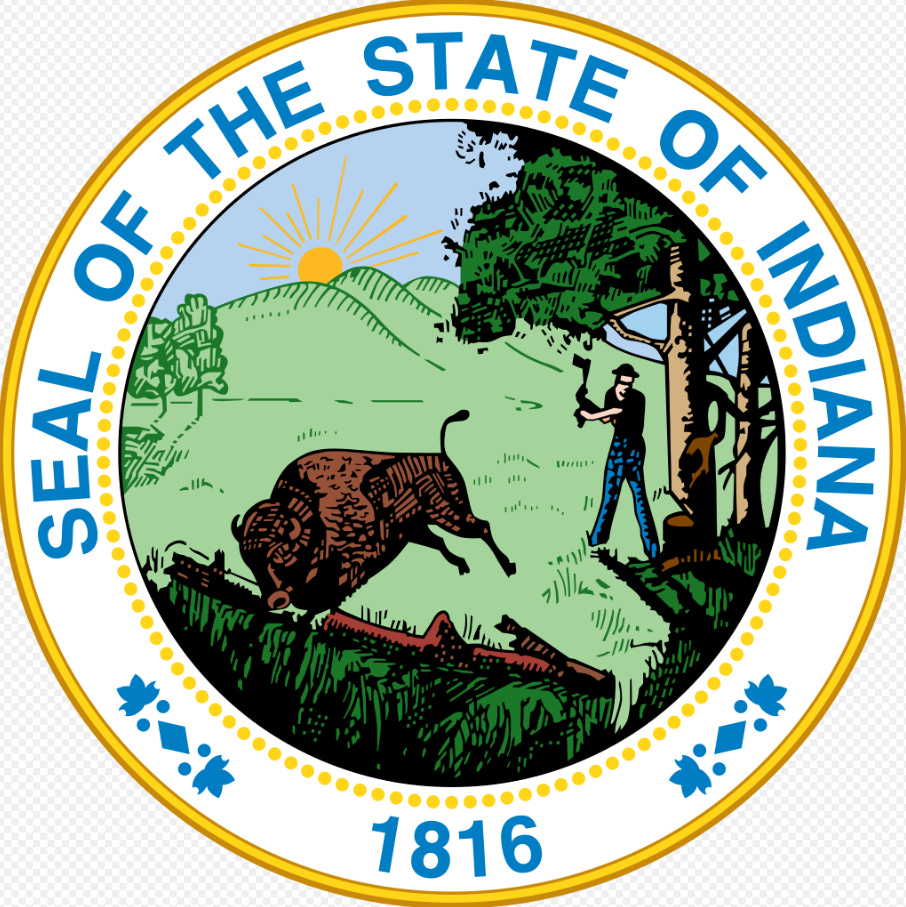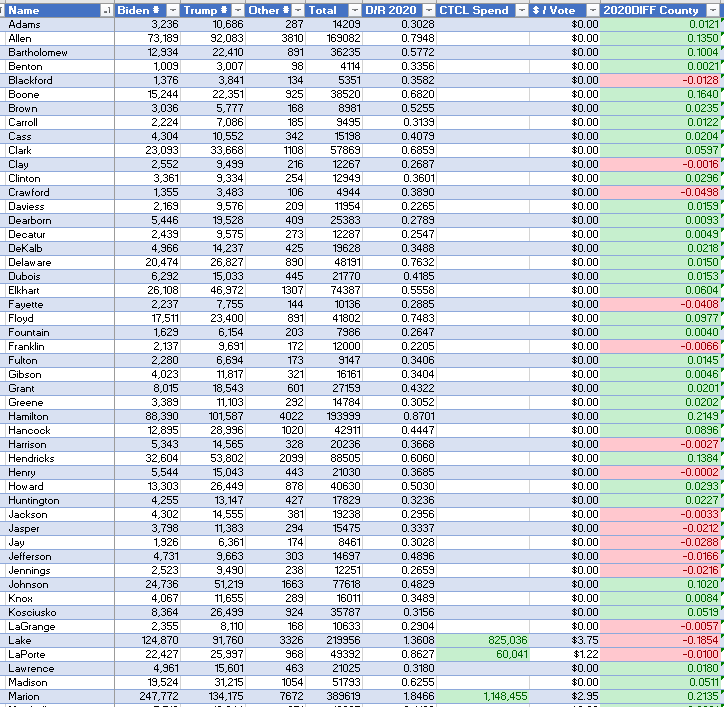The NGO Project Part XXXV: CTCL in IN
The Hoosier State
Introduction
Question: Is CTCL misrepresenting the information on the IRS Form 990 stating that the PURPOSE of the grants were to help support the SAFE administration of public elections during the Covid-19 pandemic?
Answer: It appears so given the results of both aggregate, state and county by county analysis as we will see below. It appears this is a quantifiable democrat ballot harvesting operation.
Background
This is Part XXXV in The NGO Project series which examines the role NGOs had in determinative outcomes in the 2020 Presidential Election. In prior articles, I focused on the effect the Center for Technology and Civic Life (CTCL) had on AZ, CO, CT, GA, IA, IL, ME, ME, MI, MN, MT,NC, NH, NJ, NE, NM, NY, OH, OR, PA, RI, TN, TX, UT, VT, VA, WA and WI.
This article will solely focus on CTCL in Indiana (IN).
Calculation Basis
The calculation basis was previously explained in detail here. In this article, I do make one adjustment and that is to calculate the 2020DIFF factor by weighted average rather than arithmetic average.
Analysis
5 of 92 IN counties (5%) received CTCL grants.
Total votes cast in CTCL counties were ~ 684,342 (23%) and NonCTCL counties was ~ 2,348,676 (77%). To state it a different way, on a per county basis, CTCL had the opportunity to influence 23% of IN voters.
The total amount of grants to IN was ~ $2,053,954 and the value of individual grants ranged from ~ $9,800 to $1.1MM.
This table includes all of CTCL grants by county. Notice that the largest CTCL grant is associated with Marion County that trended D in 2020 unlike all the other IN counties. This is where Indianapolis is located.
The $/vote spent by CTCL in these five counties range from $0.74/vote to $3.75/vote (all parties).
The average 2016 D/R ratio for CTCL Counties was 0.958 (not weighted). The average 2016 D/R ratio for NonCTCL Counties was 0.413 (not weighted). This means that CTCL grants were provided to more D leaning counties. This is ~2x the NonCTCL county average in 2016. More bias in favor of D.
To continue on this track, if you look at all the counties in 2016 that had a D/R ratio of less than one (R leaning counties), there were 88 (96%) counties. In total, they received ~ $80,000 in grants in 2020. This is 4% of the total 2020 CTCL grants in IN. These counties contributed ~2.0MM votes (all parties) in 2016 which is 74% of the vote total.
To put it a different way, 4% of the 2020 CTCL grants went to counties where 74% of the votes were cast in 2016 in NonCTCL counties. Clearly, a D bias and the biggest disparity I have seen so far in any state!
2020DIFF Calculated with Weighted Average
For this analysis, I used a slightly different way to calculate the 2020DIFF using a weighted average based on total votes in a county. This is what it looks like.
w = Total County Vote / Total State Vote
a = D/R2020 - D/R2016 (for CTCL Counties)
a' = a * w (per county)
2020DIFF = sum(a'1:a'n)
This method in theory permits a better correlation for D vote harvesting because it is weighted for counties with higher vote totals.
Now things get weird…..
Indiana is a state (one of the few) where a D harvesting factor cannot be calculated based on this model. Why?
Lake County.
Lake is a CTCL County that had a -2020DIFF of -0.1854. It went heavy R in the ratio of D/R voters in 2020. People in this D County really came out for Trump in a higher ratio.
I will illustrate the point.
The 2020DIFF for CTCL counties is 0.061 and for NonCTCL counties it is 0.071. This means that the CTCL D vote harvesting factor in CTCL entities is 0.061-(0.071) = -0.010 or ~ 0%.
Noteworthy R Stalwarts
These are all of the R stalwarts in terms of -2020DIFF which indicates higher R turnout as a ratio to D between 2016 and 2020. And there is that pesky Lake County with a CTCL grant AND…..a high -2020DIFF of -0.1854.
Conclusion
CTCL issued ~$2.1MM grants in IN. Based on this model, the D harvesting factor is 0%. CTCL made no meaningful difference in the overall state outcome for President.
Not a very good investment if you are part of the election racketeering cabal.
All Counties
References
CTCL IRS Form 990 (revised form from Jan 2022 used)
Telegram - https://t.me/electiondataanalyzer
Truth - @ElectionDataAnalyzer
The math here is simple, try this on your own. It is a model to look for trends, not an exact science.






